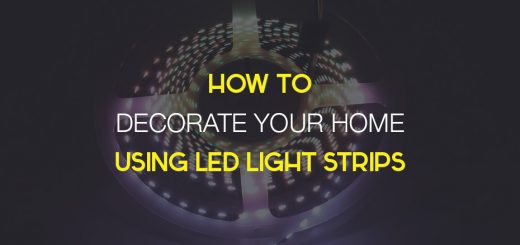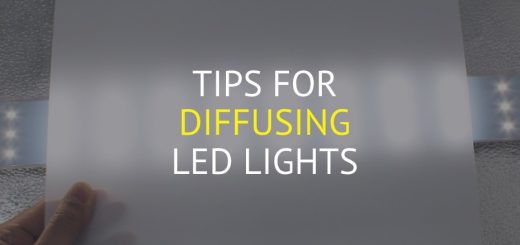The Psychological Effects of Lighting on Humans
You may have heard of light psychology or maybe you’ve just observed how your mood changes when you spend too much time under artificial light instead of under sunlight, or when you just don’t get enough sunlight in general.
All these and many others are the psychological effects of lighting on the human mind. The connection between light and human psychology has been observed for quite some time and there’s even a lot to be said about the connection between sunlight and the behavior of other mammals and animals. Despite all the research, however, there still is a lot we don’t know about light and psychology which is why the research and studies continue to this day.
Still, there’s quite a bit we do know anyway, so let’s explore the basics of it here together.
Why does light affect our psychology?
Like most other animals on Earth, humans have evolved in accordance with their environment. And light, particularly the natural sunlight, is a very common part of that environment. Before the invention of artificial light sources or clocks, sunlight was people’s cue to when they should go to sleep when they should wake up, when they should be more physically active, and so on. This is reflected in our biology and hormones too.
One good example is the hormone melatonin. This is the hormone that prepares our brain and body for sleep – it’s essentially the hormone that makes us feel sleepy. The human body is programmed to release melatonin under different circumstances such as physical tiredness at the end of a long day of work. However, melatonin is also released after sunset when it gets dark. This is an evolutionary response of our body as most ancient humans would start preparing to go to sleep as soon as the sun sets.
Another pretty well-known way in which sunlight affects our bodies, and through them – our psychology, is Vitamin D. Crucial for a lot of different physical aspects of our well-being, vitamin D is also very significant for our psychology as it prevents anxiety and depressive conditions.
Most of these benefits we gain from sunlight aren’t present underexposure of artificial light. People have created quite a few different sources of artificial light at this point but most of them serve strictly practical functions and can’t replace natural sunlight in all the manners in which it serves our physiology and psychology. That’s why it’s so important to give yourself enough exposure to natural sunlight throughout the day. Even if you work indoors there are always ways to provide yourself with enough sunlight by working near a window or just going outside every once in a while. The effects of windows and daylight exposure on the health, sleep, and psychology of people has been very well-documented over the years.
What is the Circadian Rhythm?
You may have heard about some of the things we mentioned above but you may have also heard about the Circadian Rhythm. A combination of two Latin words – circa (approximately) and diem (day), the Circadian rhythm refers to a single day-night cycle, usually represented in a circle. On that circle, you can see displayed the different psychological and physiological effects on human beings. For example, around 07.00 am we tend to have a very sharp rise in our blood pressure, around 07:30 am the melatonin secretion stops, regardless of whether we feel tired or not, and so on.
 In other words, a lot of the functions in our body and brain are dictated by the time of day and the amount of sunlight we get. And, as a consequence of that, cutting yourself from direct sunlight or going against the Circadian rhythm often results in suboptimal and even dangerous health consequences.
In other words, a lot of the functions in our body and brain are dictated by the time of day and the amount of sunlight we get. And, as a consequence of that, cutting yourself from direct sunlight or going against the Circadian rhythm often results in suboptimal and even dangerous health consequences.
How about artificial light? How should you manage and control the artificial lighting in your home and workplace?
Sunlight’s effect on us is pretty clear but what about artificial light? How does the light from our lamps and computer screens affect us outside of simply enabling us to do our work and perform various tasks? It may not be as good for us as sunlight and prolonged exposure to a computer screen has been shown to have its downside, many of which are mostly related to insufficient exposure to sunlight, the tiredness of our eyes, and so on.
But the way the artificial light around us is set up and the type of artificial light we use can also have a lot of effects on our psyche. The most famous research in the field is done by John Flynn at Kent State University and the General Electric Lighting Institute from 1971 to 1975.
During his extensive research, Flynn found out that, when relaxing, people prefer a relatively dim part of a space that’s oriented toward a brighter area. However, when they are working, people prefer to be in the brighter sections of the space around them.
More importantly, Flynn’s research also concluded that lighting also leads to a change in one’s productivity on the same principle – when people are situated in brighter spaces they tend to feel more productive and willing to work. However, when they are surrounded by a dim environment, they get more relaxed and have less of an inclination to do anything productive.
As he was conducting his research, Flynn separated four different lighting approaches:
- Overhead lighting vs peripheral lighting (i.e. lighting from the center of the room vs one from the walls).
- Uniform lighting vs non-uniform lighting (i.e. whether there aren’t any spots/pools of brighter light or not).
- Bright vs dim lighting.
- Warmer vs cooler lighting.
Flynn’s study ended up suggesting that a combination of bright and uniform lighting with peripheral sources influences one’s visual clarity and stimulates their productivity and desire for work. On the other side, a dimmer and less uniform lighting with mostly overhead sources tends to promote relaxation. These findings have continued to be reaffirmed by the following ones throughout the years are offer great insight for how you should arrange the lighting in your home or workplace if you want to stimulate productivity or relaxation.



